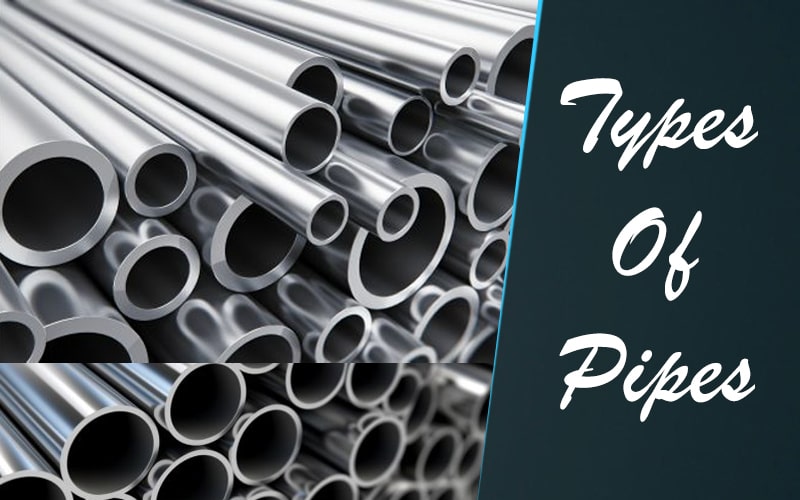Piping is a fundamental backbone of any plumbing system, yet improper selection remains one of the most common and costly mistakes. Beyond transporting water or other fluids, pipes must adhere to electrical codes and withstand pressure ratings. They must also connect with exacting precision and serve their function for decades.
With new materials and manufacturing processes getting introduced every year, even experienced professionals find themselves overwhelmed by the vast options. So, what types of pipes are out there, and what do you use for your project?
The list is quite long. However, the selection becomes easy if you divide the classification. There are four classifications –based on their materials, the fluid they are intended to transport, their manufacturing method, and engineering use. In this “types of pipes” guide, we will cover every type of pipe that is used in real life.
Types of Pipes Based on Materials
Key among the factors that determine the type of pipe used for any plumbing or piping system is the material used in pipe construction. It dictates the mechanical properties and applications of the pipe.
It could be metallic or non-metallic. The following are the main categories of pipe materials used in industry:
1. Metallic Pipes
Metals have historically been the most widely used materials for pipe construction. They have high strength, corrosion resistance, and welding compatibility. These materials can be classified into ferrous and non-ferrous types based on their metal composition.
1.1. Type of pipes made using ferrous materials
Due to their strength, durability, and corrosion resistance, pipes are manufactured from ferrous materials or iron-containing alloys. They are commonly used in industrial applications. Some of the main types of ferrous pipes used include:
- Carbon steel pipes:
These pipes are the most economical piping material and one of the most commonly used worldwide. It has good corrosion resistance properties. They have less than 2% carbon content and other alloying elements like manganese, silicon, etc. They can withstand pressures up to several hundred PSI.
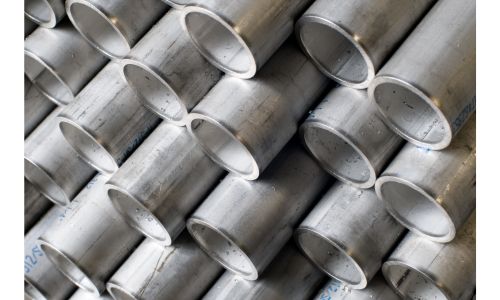
However, carbon steel pipes require protective coatings or linings in corrosive environments to prevent rusting and corrosion. They are often used for applications such as pipe distribution systems for municipal water and gas lines where corrosion resistance is not critical.
- Stainless steel pipes:
Stainless steel pipes have a minimum chromium content of 10.5%, making them highly corrosion- and rust-resistant. Other alloying elements like nickel are also added for increased corrosion resistance.
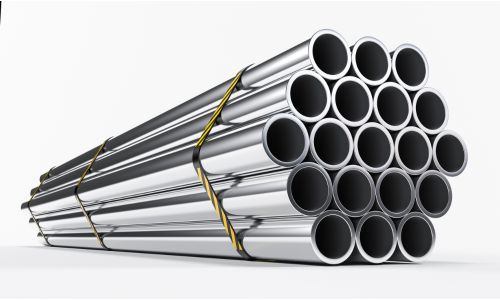
Stainless steel pipes have applications where corrosion resistance is important. Good examples of these applications include food processing, dairy, and chemical transportation. That is because of their ability to withstand corrosive substances and meet sanitary requirements.
These pipes have higher yield strength compared to carbon steel and can withstand pressures up to several thousand PSI. However, stainless steel’s material cost is higher than carbon steel pipes.
- Alloy steel pipes:
Alloy steel pipes are made from several elements, with iron being the main element. They contain precise amounts of alloy elements like 1.65% Manganese, 0.6 Silicon, and 0.6% copper. This is to achieve specific properties as per industry standards.
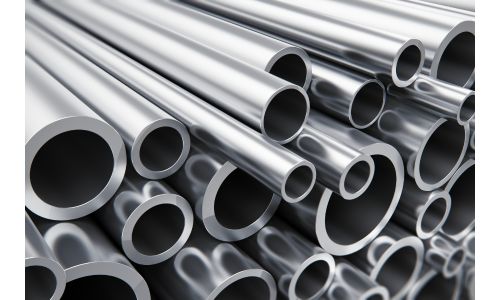
Compared to carbon steel, they have enhanced corrosion resistance, strength, and temperature capabilities. Because of this, they are often used in applications like oil and gas extraction and transportation, where maximum strength and durability are required.
- DSS pipes:
Duplex Stainless Steel pipes have a microstructure and composition of approximately 50% austenite and ferrite. This is designed to take advantage of ferritic and austenitic stainless steel. They combine high corrosion resistance with high mechanical strength.
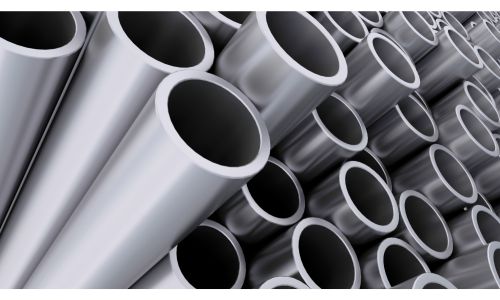
The pressure-carrying capacity of stainless steel pipes varies depending on the pipe schedule, size, wall thickness, and operating temperature. The allowable pressure ranges from 965 psi for a 5″ schedule 40 pipe at 100°F to 4493 psi for a 1″ schedule 160 pipe at the same temperature.
They are widely used in the chemical, desalination, and pulp industries. That is due to their doubled corrosion resistance compared to conventional stainless steel.
- Cast Iron pipes:
Cast iron pipes have been used for over 150 years in municipal water works. They provide good corrosion resistance, low cost, and are easy to join. However, cast iron has low tensile strength, ranging from 1.26 to 1.57 tons per square centimeter, and is brittle in nature.
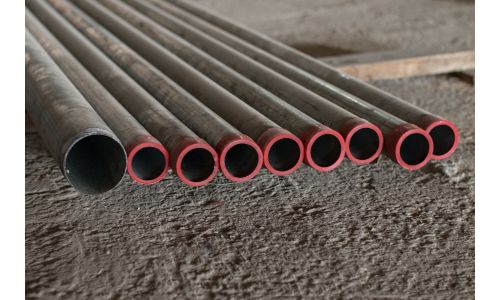
They are protected internally and externally to enhance their life in corrosive environments. Now, ductile iron has replaced cast iron for pipelines requiring mechanical strength.
- Ductile Iron pipes:
Replacement for cast iron pipes, ductile iron, or spheroidal graphite iron is more ductile than cast iron. This is due to its spheroidal or rounded graphite shape.
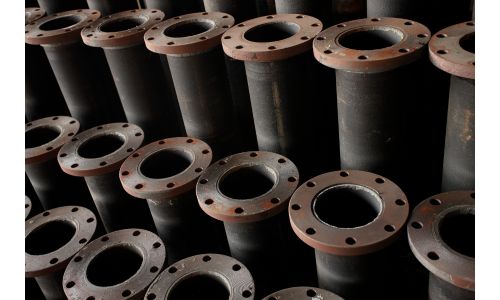
Ductile iron pipes have higher tensile strength, ranging between 40,000 and 70,000 psi, impact resistance, and flexibility than cast iron pipes. They have a long service life of over 100 years and provide a cost-effective solution.
1.2. Type of Pipes made from Non-ferrous materials
Non-ferrous metals such as copper, aluminum, and zinc are also widely transformed into piping for various industrial and commercial purposes. Below are some of the common non-ferrous pipes available:
- Aluminum and Aluminum alloy pipes:
They are lightweight and highly durable, making them easy to handle and install. They also have excellent corrosion resistance properties. Alloying elements like magnesium are added to aluminum to enhance its mechanical properties as industry standards require.
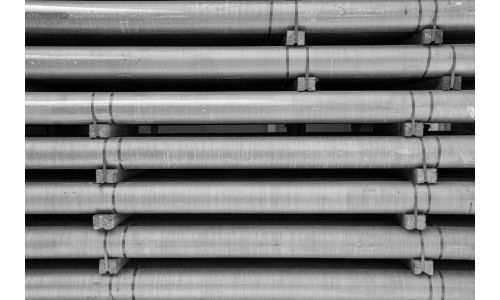
Aluminum and aluminum alloy pipes are mostly used in areas where lightweight design and corrosion resistance are required. These are applications such as air conditioning, refrigeration, and irrigation systems.
They are also used in automotive/marine fluid transfer, where aluminum’s high strength-to-weight ratio is a benefit over other materials like steel.
- Copper and copper alloy pipes:
Copper pipes have outstanding corrosion resistance even in salt water and are commonly used for potable water distribution and refrigerant piping. They have self-sterilizing properties due to the antimicrobial characteristics of copper.
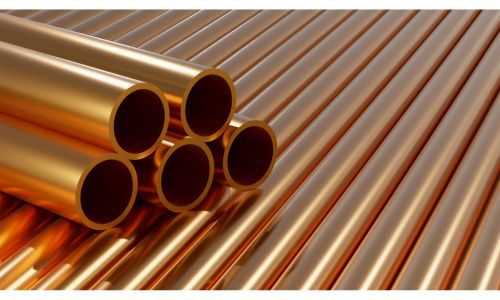
Copper alloy pipes with tin and other elements have enhanced mechanical properties for high-temperature and pressure applications. Copper-nickel alloys like Monel are used in seawater piping systems for ships.
- Nickel and Nickel alloy pipes:
Nickel alloy pipes offer exceptional corrosion resistance for highly corrosive chemical environments due to nickel’s high chromium content. They maintain strength at high temperatures and pressure.
That’s why they are primarily used in applications like boiler feed water lines, heat exchangers, etc. Common nickel alloys used are Hastelloy, Inconel, and Monel, which have ni-cr-mo composition.
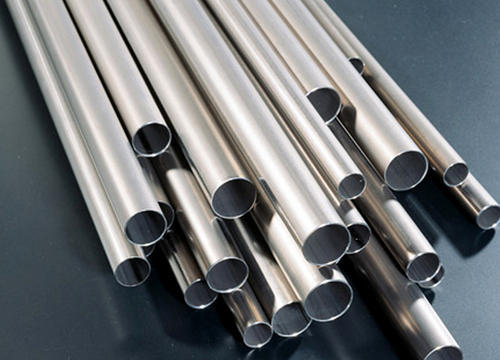
- Titanium and titanium alloy pipes:
These pipes have the highest strength-to-weight ratio of any metal. The strength of titanium ranges from 30,000 psi to 200,000 psi. They are also highly resistant to corrosion from chlorine and seawater. Therefore, they are often used in desalination plants, chlor-alkali industries, and offshore oil rigs.
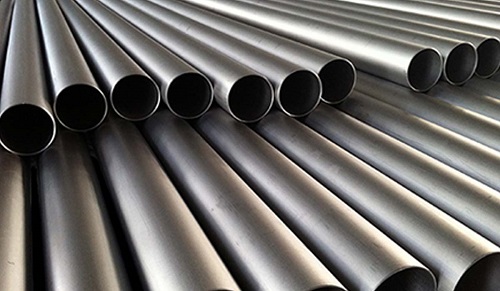
Titanium alloy pipes with tin, nickel, and other elements like 6Nitinol are super elastic and find uses in medical implants.
- Zirconium and Zirconium alloy pipes:
These are used in nuclear industries due to zirconium’s low neutron absorption cross-section. Zircaloy alloy, which is zirconium alloyed with tin and niobium, has excellent corrosion resistance. That makes it ideal for steam and high-temperature water exposures in pressurized water nuclear reactors. They act as cladding for nuclear fuel rods.
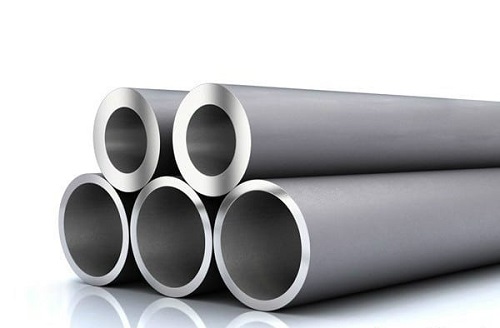
2. Non-Metallic Pipes
While metals remain popular pipe materials, advances in manufacturing technologies have resulted in viable non-metallic alternatives. They provide distinct advantages over their metal counterparts.
Non-metallic pipes are often used in pressure piping, drainage, irrigation, and more applications. The main non-metallic varieties include the following.
2.1. PE/HDPE Pipes
Polyethylene (PE) or high-density polyethylene (HDPE) pipes are made from processed crude oil or natural gas. They are very durable and resistant to corrosion from soils and certain chemicals.
Due to their high strength-to-density ratio and flexibility, HDPE pipes are used extensively for natural gas distribution and plumbing applications.
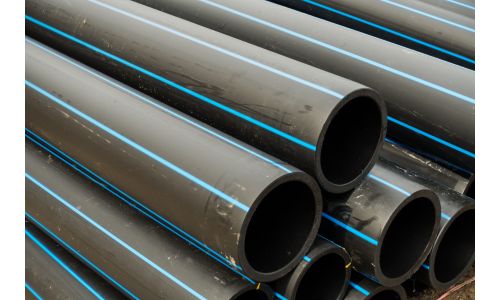
2.2. uPVC/PVC/CPVC Pipes
Polyvinyl Chloride (PVC), Unplasticized Polyvinyl Chloride (uPVC), and chlorinated polyvinyl chloride (CPVC) pipes are thermoplastic materials. They are produced from polyvinyl chloride resin. They possess good mechanical and electrical properties.
That makes them suitable for potable water supply, drainage, and sewage systems. Their resistance to corrosion and longevity has led to widespread use in developed countries.
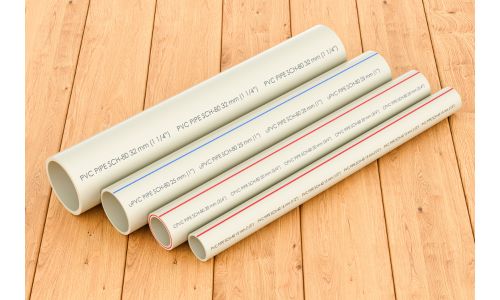
2.3. PP pipes
Polypropylene (PP) pipes are produced from polypropylene resin through extrusion. They exhibit outstanding chemical resistance and are utilized for applications involving the transportation of aggressive chemicals.
PP pipes are also light in weight, cost-effective, and have high elasticity. Typical uses include drainage, mining, and seawater desalination systems.

2.4. Reinforced thermoplastic pipes or RTPs
Reinforced thermoplastic pipes comprise an inner thermoplastic liner reinforced with fibers. Typically, glass fibers are wrapped helically around the liner.
RTPs offer corrosion resistance, longevity of plastics, and high strength from the reinforcing fibers. They find applications where operating pressures and temperatures are high, including oil and gas pipelines, geothermal applications, and industrial plants.
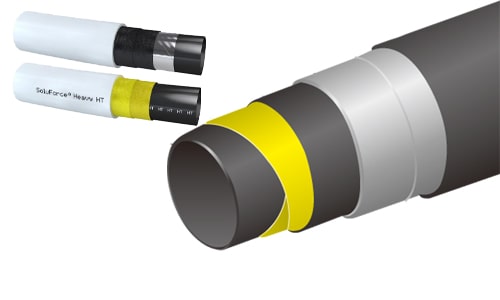
2.5. ABS Pipes
Acrylonitrile butadiene styrene (ABS) pipes are made from ABS resin, a rigid plastic. They display good mechanical properties, stress crack resistance, and flexibility.
Due to their ability to withstand heat and pressure, ABS pipes are used in applications such as drain-waste-vent systems, irrigation, and septic systems.
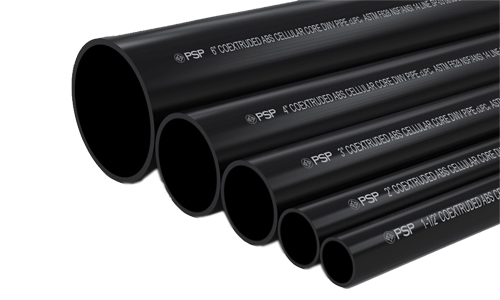
2.6. Composite pipes like GRE/GRP/FRP Pipes
Glass-Reinforced Plastic (GRP), Glass-Reinforced Epoxy (GRE), And Fiber-Reinforced Plastic (FRP) pipes are composites made of plastic or resin reinforced with glass fibers. They exhibit high mechanical strength coupled with corrosion resistance.
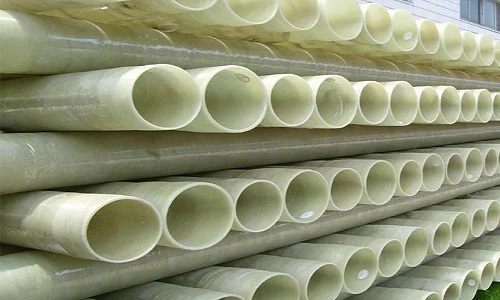
GRE/GRP/FRP pipes are utilized where long life, durability, and chemical resistance are essential. For example, they are used in hydroelectric projects, transportation of seawater, and pulping effluent.
2.7. Cement and Asbestos Cement Pipes
Asbestos cement pipes, developed in the early 1900s, are made from Portland cement, sand, cellulose fiber, and asbestos fiber, mixed and formed into pipes. The ratios differ depending on the manufacturer and amount of elements used. For example, some may just 80-85% Portland cement and 15-20% asbestos fiber.

These pipes are inexpensive and have high mechanical strength, resulting in widespread use as building service pipes for water supply. However, asbestos use is now banned or restricted in many countries due to health hazards.
2.8. Vitrified clay pipes
Vitrified clay pipes are made from clay fired in a kiln to above 1100°C (200°F) to form a glass-like material called vitrified clay. They have low permeability and are thus used extensively in gravity-fed sewage systems due to their durability and chemical resistance.
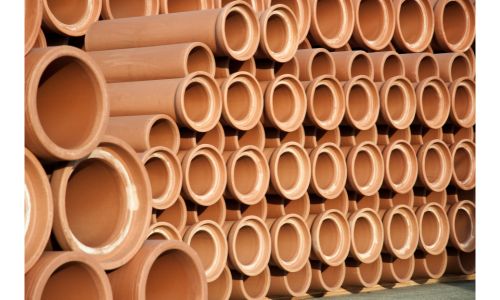
While widely used earlier, they have now been replaced to some extent by newer plastic pipes.
Types of Pipes Based on the Fluid Transportation
The type of fluid being transported is another primary factor that determines the material and design of the pipe system. The pipe must be specially constructed to safely and effectively enable the movement of the substance through containment.
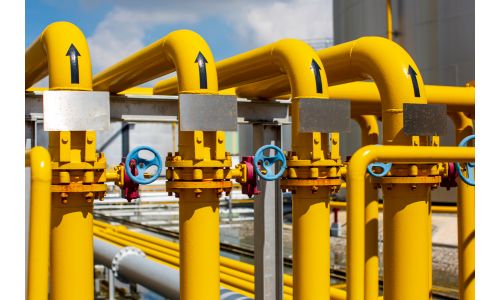
Here are the various types of pipes available based on fluid transported:
1. Water Pipes
Water pipes are designed to transport drinking water and wastewater in residential, commercial, and municipal applications. Material selection depends on water quality, quantity, pressure, temperature, and soil conditions. The different water pipes you can find in the market include the following.
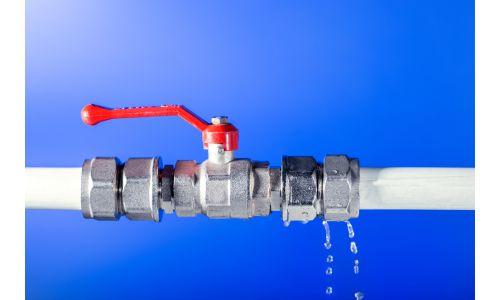
3.1. Chlorinated Poly Vinyl Chloride Pipes (CPVC)
CPVC pipes are suitable for potable water distribution. They have impressive thermoplastic properties and chemical resistance against chlorine and temperature fluctuations. They are made from chlorinated polyvinyl chloride, which is base PVC treated with additional chlorine atoms, between 56% and 74%.
CPVC maintains structural stability at temperatures up to 200°F without releasing harmful substances. It is widely used for indoor plumbing works involving hot and cold lines.
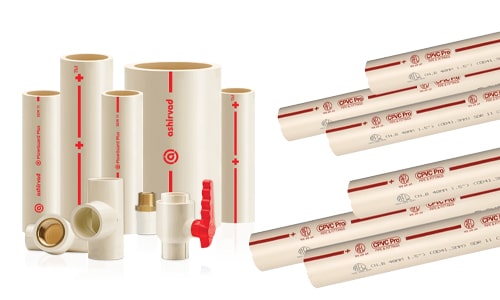
3.2. Unplasticized polyvinyl chloride Pipes (uPVC)
uPVC pipe is a popular material for water and sewer systems due to its rigidity, lightweight, and affordability. Formed from polyvinyl chloride resin, uPVC pipes are thermoplastic but non-flexible to maintain shape under pressure.
Excellent corrosion resistance and low costs have led to widespread usage in developing water infrastructure.
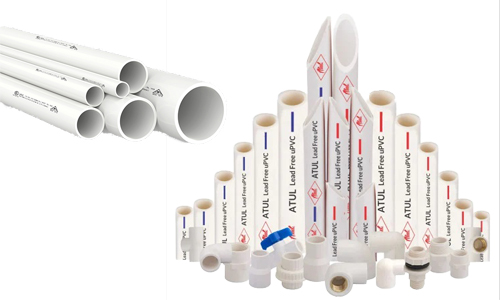
3.3. PVC Pipes
Standard PVC pipes exhibit greater flexibility than uPVC due to their composition lacking plasticizers. This flexibility allows easier installation around tight bends and curves common in residential plumbing systems.
PVC maintains structural integrity at moderate water pressures and temperatures. However, they may be susceptible to cracking under severe pressure or wide temperature fluctuations.
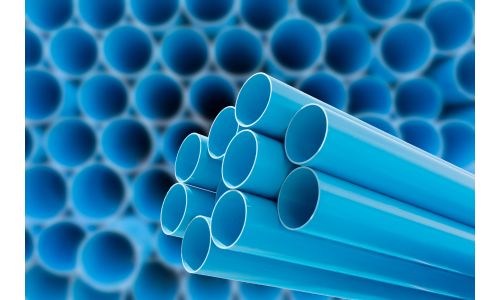
3.4. Galvanized Iron Pipes
Galvanized iron pipes consist of iron coated with a thin layer of zinc, about 50%-70% for most hot-rolled steel. They were extensively used in the past mainly due to its initial strength and natural resistance to corrosion.
However, over long periods, the zinc coating can degrade when exposed to soil and water conditions. This eventually leads to corrosion of the base iron material from the inside out. This increased the need for repairs and replacement over time.
They are still popular in the construction industry. They are also used in residential and commercial applications.
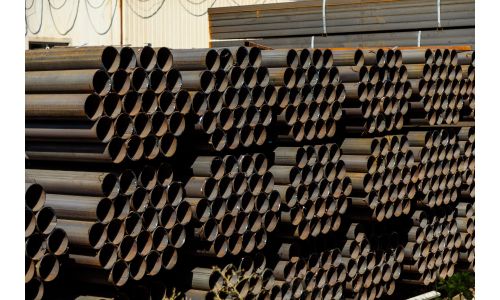
3.5. Polypropylene Pipes
Fashioned from flexible polypropylene, these pipes are highly malleable. They can easily conform to tight spaces or change pipe directions during installation.
They boast dimensional adaptability combined with the material’s durability. They also resist corrosion from acids and chemicals. That makes polypropylene well-suited for the transportation of non-potable substances in applications like sewage systems and drainage works.
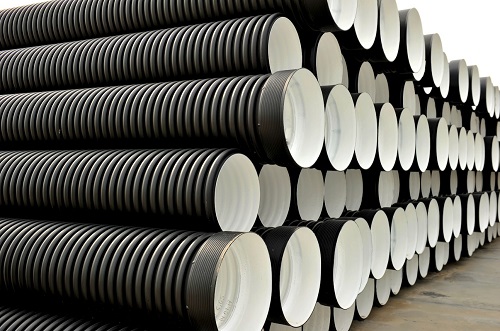
3.6. Cast Iron Pipe
Cast iron is an alloy with a carbon content above 2% and silicon typically ranging from 1-3%, with the percentage defined by its carbon equivalent of % Carbon + 1/3% Si. With a long history of use for its compressive strength and robustness against corrosion, the cast iron pipe remains present in aging water infrastructure.
However, it is dense and heavy, with joints that require skilled assembly. Moreover, minerals deposited internally over decades may compromise the lining and expose the cast iron to the risk of degradation if not properly maintained.
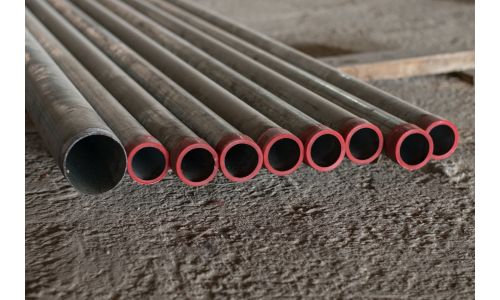
2. Gas pipes
Materials for gas pipes depend on the type of gas carried and operating conditions. Steel and plastic pipes are common choices. Steel withstands high pressures but is heavy.
Plastic, like HDPE, provides corrosion protection and is lightweight for natural gas distribution. Cast iron was used historically for municipal gas but is now replaced. Stainless steel finds usage in industrial applications involving corrosive gasses.

3. Vapor pipes
Vapor pipes transport gasses that have condensed from their gaseous state. Common vapor pipe materials include steel, copper, stainless steel, and galvanized iron, depending on the type and pressure of vapor handled.
Industrial plants use vapor pipes for ammonia, refrigerants, and other chemicals. Drainage also uses small-diameter vapor pipes.
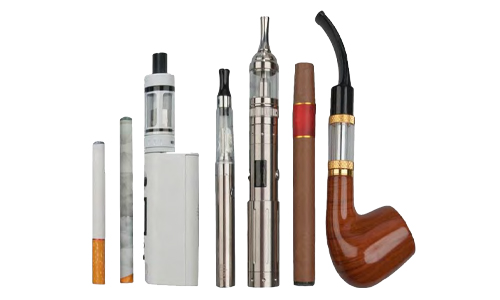
4. Oil pipes
Oil pipes are generally carbon steel with anti-corrosion coating for crude oil transport via pipelines over long distances at high pressures and temperatures.
Offshore drilling rigs and tankers utilize steel pipes with additional protection like concrete or fiberglass coating. Underground petroleum product distribution relies on cathodically protected steel. Polyethylene finds increasing usage for edible oil transport.
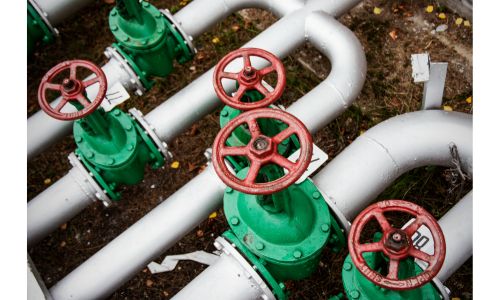
5. Steam pipes
Steam pipes transport steam at high temperatures and pressures in power plants and factories for process or heating needs. Depending on the steam state and impurities, materials include carbon steel, stainless steel, and higher-grade alloys. Insulated piping prevents condensation and protects personnel.

6. Hydrogen pipes
For flammable hydrogen gas, specialized piping from corrosion-resistant alloys like stainless steel, nickel alloys, or composites is often used due to its highly diffusive nature.
Tight specifications are required considering hydrogen’s low ignition energy and potential for embrittlement of many metals.
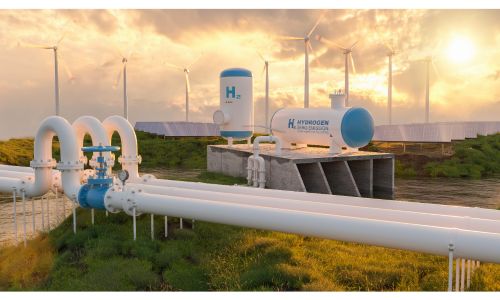
Types of Pipes based on the Manufacturing Method
Another way pipes are commonly classified is based on their manufacturing method. There are two primary manufacturing methods used: seamless and welded.
1. Seamless pipe
Seamless pipes are forged as one single piece from steel or alloy ingots using either hot or cold-working manufacturing processes. This continuous, seamless tube production method produces pipes without welded seams. Here are some of the seamless pipes available:
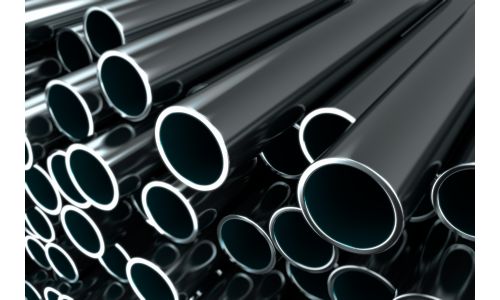
9.1. ASTM A53, A333, API 5L, and A106 (CS and LTCS pipes)
ASTM A53, A333, and A106 are carbon steel pipe standards. A106 is for high-pressure applications up to 750 degrees Fahrenheit. It has tighter chemical and mechanical properties.
A333 has a lower carbon content suitable for temperatures below 400 degrees. A53, coated with hot and black zinc, is for general low- and medium-pressure applications. API 5L specifies line pipe for oil/gas transmission.
These use the seamless continuous pipe manufacturing method, where a hot billet is drawn through diamond dies to form a hollow shell. This provides excellent mechanical properties without welds.
9.2. ASTM A312 Series 400 and 300 (SS pipes with grades 347, 321, 316, and 304)
ASTM A312 specifies stainless steel pipe standards. Grades 304 and 316 are austenitic stainless containing chromium and nickel. Grade 304 is more corrosion-resistant. Grade 316 has added molybdenum, improving resistance further.
Grade 321 is for high strength, and 347 is for heat resistance. These are manufactured using the seamless method, which hardens the material for excellent corrosion resistance without compromising strength.
9.3. ASTM A335 Grades P5 to P91 (Alloy steel pipes)
ASTM A335 covers alloy steel grades P5 to P91 used for high-temperature applications. Higher grades have increased creep resistance, allowing use at even higher temperatures. Common alloys used are chromium, molybdenum, and vanadium carbide.
Seamless manufacturing provides a homogeneous composition free of defects and consistent mechanical properties throughout the pipe wall thickness.
9.4. ASTM A790/A928 (DSS and SDSS pipes)
ASTM A790 and A928 specify duplex (ferritic-austenitic) stainless steel pipes. These have a balanced microstructure of 50% ferritic and 50% austenitic, providing strength and corrosion resistance.
Common grades are 2205 and 2507. The seamless process hardens the material, granting high yield strength for critical applications. It also prevents micro-galvanic corrosion between austenite and ferrite phases.
These seamless pipes are crucial for precision work in refineries and chemical plants dealing with corrosive substances at extreme heat. Their uninterrupted form handles high demands for exactness where even tiny imperfections could have ruinous effects.
9.5. Nickel Alloys (Cupronickel, Inconel, Monel, Hastelloy, Nickel 200)
Nickel alloys have very high corrosion resistance for demanding applications. Grades include Inconel, Hastelloy, Cupronickel and Monel. Inconel 625 and Hastelloy C276 are widely used.
The seamless manufacturing avoids the detrimental effects of welds in aggressive services. It produces a homogeneous structure with properties consistent throughout. This ensures prolonged operation in complex chemical environments.
Common applications include chemical and petrochemical equipment, aerospace components, industrial heat exchangers, medical implants, and marine hardware.
2. Welded pipe
Welded pipes are constructed by forming and joining steel plates or coil strips together along a seam using welding technology. Examples of these techniques include Electric Resistance Welding (ERW) or Longitudinal Submerged Arc Welding (LSAW). The joining of metal pieces via welding introduces seams into the piping structure.

10.1. ERW pipes
ERW stands for Electric Resistance Welded. A flat steel strip is continuously welded along its length to form a hollow tube. It is one of the most cost-effective pipe-making techniques.
The strip is heated by electrical resistance and rolled between grooved rolls to form a weld. However, the weld region has lower ductility than the parent metal. Also, imperfections may remain inside without non-destructive testing.
ERW pipes are commonly used in pressure applications for water distribution and transportation systems. They can also be used for natural gas distribution lines that operate at lower pressures.
10.2. LSAW pipes
LSAW, or Longitudinal Submerged Arc Welding, is commonly used to manufacture Line Pipe. It uses an automatic welding head operating inside the pipe. An arc welds the narrowly overlapping edges under a cover of fusible powder.
That protects the weld area from atmospheric contaminants. It produces watertight, high-strength seams comparable to seamless pipe. The submerged arc technique with automatic multi-run welds provides consistent mechanical properties throughout the circumference.
Large-diameter LSAW pipes are often used for oil and gas pipelines that transport hydrocarbons over long distances. They are also useful for carrying water and sewage through municipal piping networks
Types of Pipes based on Engineering Use
Another way pipes can be classified is based on their intended engineering use. The engineering demands placed on pipes vary widely across industries such as chemical processing, power generation, construction, etc. The main types of pipes differentiated by engineering use include:
1. Brass Pipes
Brass pipes are commonly used for potable water distribution. As a copper-zinc alloy, brass is highly resistant to corrosion and bacteriological growth. It can withstand water pressures and has long-term durability.
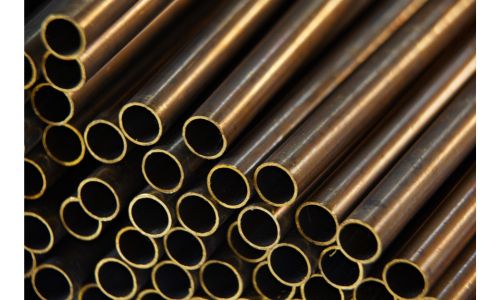
These properties make brass pipes suitable for indoor plumbing systems supplying drinking water. The self-sanitizing nature of brass also prevents contamination.
2. Cross-Linked Polyethylene Pipes (PEX)
PEX piping is a popular choice for radiant heating systems. Through cross-linking, PEX pipe gains enhanced durability and flexibility compared to standard polyethylene.
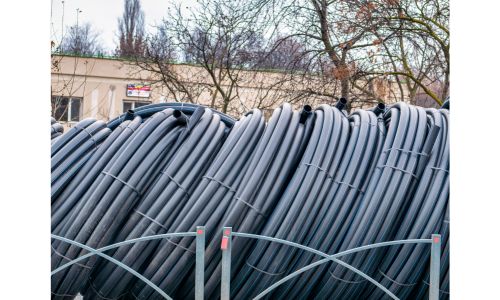
It can be bent and formed on-site, making it well-suited for installation beneath flooring or within walls where tight turns are required. PEX pipe is resistant to chemical damage and maintains integrity at pressures up to 100 psi and temperatures from -50 to 200°F.
3. Steel Pipes
Steel pipes find extensive use in industrial settings for applications like fuel distribution and fire suppression systems. The high strength and resistance to steel heat allow it to transport flammable or corrosive substances.
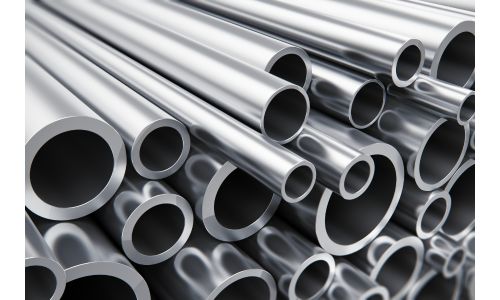
Steel pipe is also commonly used for municipal water mains due to its longevity under high-pressure conditions. Different grades are selected based on service requirements and resistance needed against factors like stress or thermal cycling.
4. Vinyl Pipes
Vinyl (PVC) pipes are light, low-cost, and easy to install, making them popular for drainage and non-potable water distribution systems. Their chemical structure provides strength and durability while resisting corrosion and rusting.
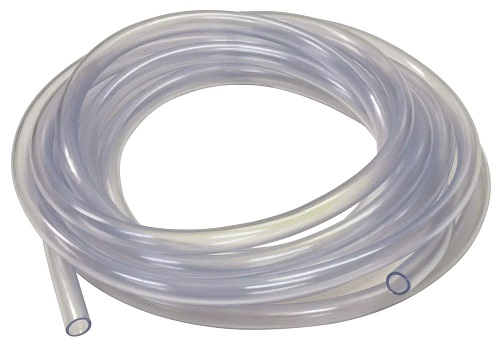
Vinyl pipes can operate in a wide range of temperatures from freezing to 140°F. They are highly suited for residential and commercial construction where drainage applications require long-lasting, affordable materials.
5. Lead Pipes
While lead piping was historically ordinary, health concerns have largely displaced its use for potable water. However, lead continues to find applications that leverage its malleability, water corrosion resistance, and ability to seal joints tightly.

Examples include radiator piping systems and flues or vents handling acidic exhaust. The lead pipe can effectively transport non-consumable fluids for decades when properly selected and installed.
Conclusion
The selection of piping plays a crucial role in fulfilling the demanding transportation needs across industries. Whether transporting precious resources or handling hazardous materials, you can find something suited to your needs.
As seen above, the classification of various pipes according to their material, intended fluid, manufacturing process, and engineering application simplifies the selection. Plumbers and engineers can now specify the optimally suited piping solution. It becomes easier to find an option that delivers safe and reliable performance for decades to come.

